GET THE PICTURE
A Personal History of
Photojournalism
by John G. Morris
Book review by Marianne Fulton
|

|
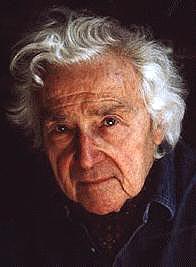 In his recent book, GET THE PICTURE (Random House, 1998), John Morris does
us a great favor--he remembers. Photojournalism, unlike many forms
of photography, is of the present and its history is lodged in an oral
tradition which includes tall tales, of course. If you want to know
how a picture or photo story came into existence, generally you go through
hundreds of magazines hoping somebody wrote down what they heard (i.e.
if photojournalists’ strength was telling stories by writing, they
wouldn't be taking photographs, etc.) If the search in print is unsuccessful,
the photographer, if alive and willing to relive a certain moment can be
helpful.
In his recent book, GET THE PICTURE (Random House, 1998), John Morris does
us a great favor--he remembers. Photojournalism, unlike many forms
of photography, is of the present and its history is lodged in an oral
tradition which includes tall tales, of course. If you want to know
how a picture or photo story came into existence, generally you go through
hundreds of magazines hoping somebody wrote down what they heard (i.e.
if photojournalists’ strength was telling stories by writing, they
wouldn't be taking photographs, etc.) If the search in print is unsuccessful,
the photographer, if alive and willing to relive a certain moment can be
helpful.
Morris is right in saying that he is a journalist although he neither reports
in words nor takes photographs--he is a picture editor.
"I have worked with photographers, some
of them famous, others unknown, for more than fifty years....I’ve accompanied
photographers on countless stories; I've carried their equipment and held
their lights, pointed them in the right direction if they needed pointing.
I've seconded their alibis when things went badly and celebrated with them
when things went well. I have bought and sold their pictures for what must
total millions of dollars. I have hired scores of photographers, and, sadly,
I've had to fire a few. I've testified for them in court, nursed
them through injury and illness, saved them from eviction, fed them, buried
them...."
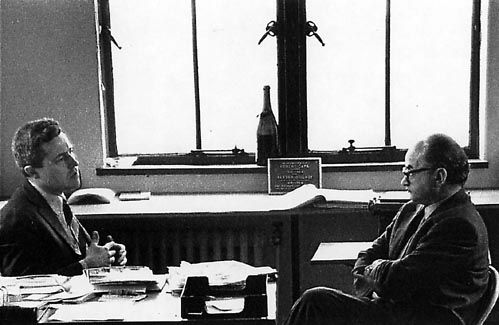
John G. Morris (left) talks
with David "Chim" Seymour, ca. 1954.
Picture editors are revered (generally later), feared, and made to be the
scapegoat for anything that goes wrong. They stand between the photographer
and, these days, the business office. They often side with the picture
or story in dispute but most often money wins out. Celebrities sell more
magazines than insight into the horrors and international implications
of Bosnia, for example.
In the paragraph quoted we see the unglamorous reality of life on the road
during conflicts or natural disasters, but Morris is a good-natured man.
He does not beg our sympathy because he has had to make miserable choices:
he and the news organization need THE picture or story that will alert
the public to the state of the world; on the other hand, he has buried
his share of close friends. I suspect he's no different than other
editors who agonize about when to pull out their photographers and then
carry the memory of those who were lost forever.
In a succinct early paragraph he describes the terrain:
"The picture editor is the voyeurs’ voyeur,
the person who sees what the photographers themselves have seen but in
the bloodless realm of contact sheet...and now pixels on the screen.
Picture editors find the representative picture, the image, that will be
seen by others perhaps around the world. They are unwitting (or witting,
as the case may be) tastemakers, the unappointed guardians of morality,
the talent brokers, the accomplices to celebrity. Most important--or
disturbing--they are the fixers of ‘reality’ and of ‘history.’"
Picture editors also have a little time to look for what the photographer
in a dangerous or rushed situation may not have seen. Who else is in the
photo? How does the composition of one image enhance its impact over another
taken of the same scene a second earlier? Also, while the picture
editor is invested in finding the perfect picture of a significant story,
the editor's distance allows her/him to stand back and consider. For the
editor, no one in the image fixed a flat tire on the company car or offered
a much welcomed glass of wine: the picture's content is paramount.
Besides writing of his great friends, including the Capa family, he also
talks about training young photographers at the Missouri Workshop, and
most importantly he walks the readers through the business of news--and
it is, of course, a very big business. He deals with censorship, timetables,
publishing parameters, and the heart-pounding hours before a story falls
into place. He outlines the sequence of new photo agencies and how they
moved into a vacuum and changed all outlets of photojournalism.
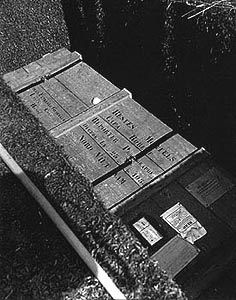
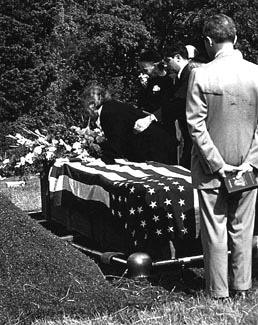
|
Of Robert Capa’s death in 1954,
we are familiar with the last pictures, the dying and the Quaker service,
we may feel the terrible loss but this section of the book is a stunner.
First, on facing pages is the picture of Capa’s coffin, in the grave.
It looks like a large wooden ammo box or supply container. But it’s
not. His name and occupation are stenciled on the top in French (it’s from
French Indochina): Restes Mortels, Capa Robert, Reporter Photographie....
Opposite a photograph shows a young Cornell Capa gripping the sides of
his mother as she leans out over the casket as if to embrace her son one
more time (pp. 160-161).
Morris describes his last phone call to Robert Capa. Morris called
Tokyo to talk him out of taking the assignment. Morris yelled over the
noise of a poor phone connection, "You don’t have to go!" Words that stayed
with the editor.
He wrote about Capa later, taking on some of the jauntiness of Capa’s own
style. In part Morris said, "He died with a camera in his left hand,
his story unexpectedly finished. He left behind a thermos of cognac,
a few good suits, a bereaved world, and his pictures, among them some of
the greatest recorded moments of modern history. He also leaves a legend,
for which there is no other description than--Capa."
There was talk at the grave site about letting an unknown, obviously young
photographer from the local paper take such intimate photographs.
When asked, Morris said, "After all, whom are we burying?" The photographer
was Dirck Halstead. |
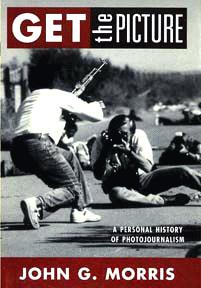 About
GET THE PICTURE I can only add GET
THE BOOK. About
GET THE PICTURE I can only add GET
THE BOOK.
Marianne Fulton
Contributing Editor
Chief Curator, George Eastman House, Rochester,
NY |


 In his recent book, GET THE PICTURE (Random House, 1998), John Morris does
us a great favor--he remembers. Photojournalism, unlike many forms
of photography, is of the present and its history is lodged in an oral
tradition which includes tall tales, of course. If you want to know
how a picture or photo story came into existence, generally you go through
hundreds of magazines hoping somebody wrote down what they heard (i.e.
if photojournalists’ strength was telling stories by writing, they
wouldn't be taking photographs, etc.) If the search in print is unsuccessful,
the photographer, if alive and willing to relive a certain moment can be
helpful.
In his recent book, GET THE PICTURE (Random House, 1998), John Morris does
us a great favor--he remembers. Photojournalism, unlike many forms
of photography, is of the present and its history is lodged in an oral
tradition which includes tall tales, of course. If you want to know
how a picture or photo story came into existence, generally you go through
hundreds of magazines hoping somebody wrote down what they heard (i.e.
if photojournalists’ strength was telling stories by writing, they
wouldn't be taking photographs, etc.) If the search in print is unsuccessful,
the photographer, if alive and willing to relive a certain moment can be
helpful.

